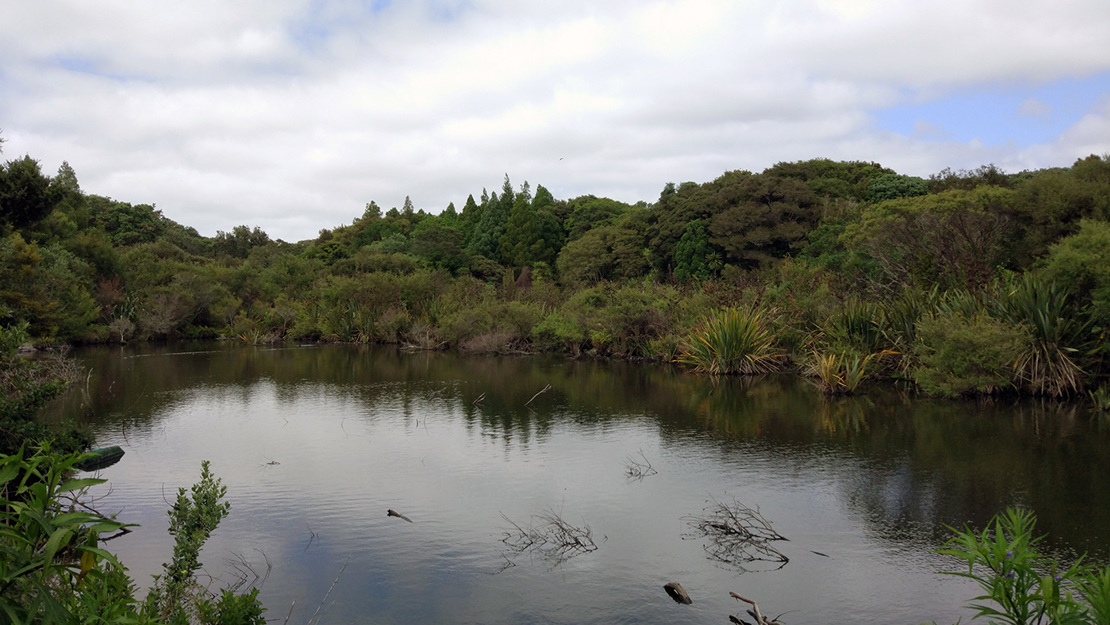Western Springs Flaxland
Size: 1.4 hectares
Site description and location
The Western Springs Flaxland biodiversity focus area is a small area of wetland in the Western Springs lake / Te Wai Ōrea. The lake is within an Auckland Council managed reserve, close to the city centre.
The lake is naturally formed, of volcanic origin, and is spring-fed from Te Tātua a Riukiuta Western Springs-Meola-Three Kings aquifer. The lake and surrounding lava flows are recognised as an Outstanding Natural Feature in the Auckland Unitary Plan (Western Springs and Lava Outcrops).
;
Key ecosystems and vegetation description
The wetland is dominated by flax and mānuka (WL18) with an abundance of kiokio, purei and floating mats of a native duckweed species, Lemna disperma. Water purslane, an exotic wetland species, is reasonably common also.
Planted native vegetation buffers the wetland on the lakeshore margins and on a small adjoining island within the lake. Shallow open water surrounds the other sides of the wetland. The soils are organic and peaty, and the surrounding water is eutrophic (nutrient rich). The wetland plant composition is an unusual assemblage in urban Tāmaki Makaurau / Auckland.
In Tāmaki Makaurau / Auckland, flaxland wetlands have been greatly reduced in extent through clearance for farming and urban development. Only a few good examples of this ecosystem type remain, and consequently flaxland has a threat ranking of Critically Endangered in the Auckland region.
;Native species
Many native species use the flaxland wetland and surrounding open water habitat, including:
- long-fin eel
- kāruhiruhi (pied shag)
- pāpango (New Zealand scaup)
- weweia (dabchick).
Many bird species congregate here as it is one of the few remaining freshwater wetlands on the Auckland isthmus. This makes the lake a popular bird watching spot.
Threats
Pest plant species are the main threat to the integrity of the wetland. Pest fish species and a high number of waterfowl also impact water quality.
Bird feeding has been an issue at Western Springs and is discouraged. It is detrimental to the health of the birds and can affect water quality leading to avian botulism outbreaks in warmer months.
;


